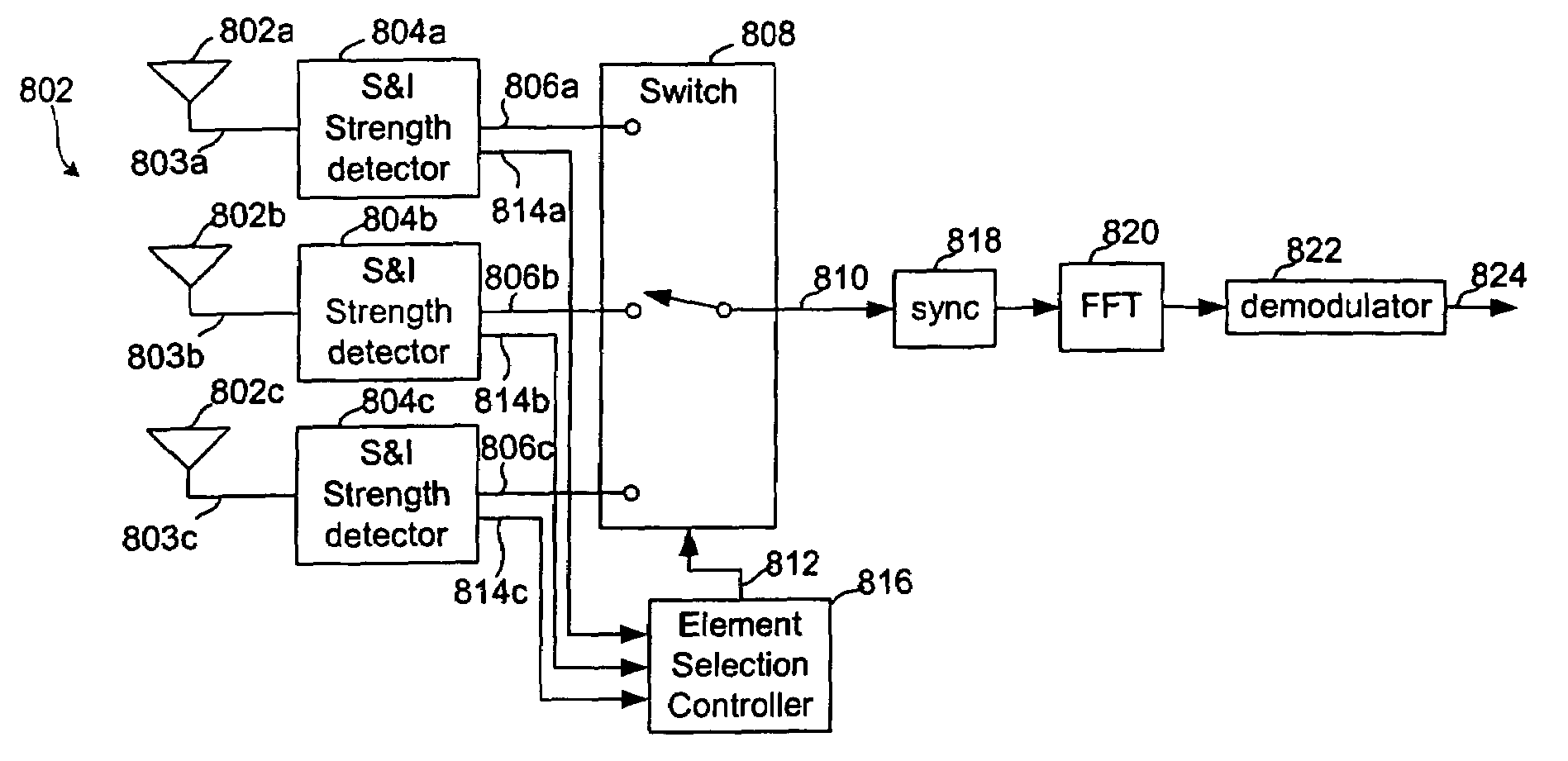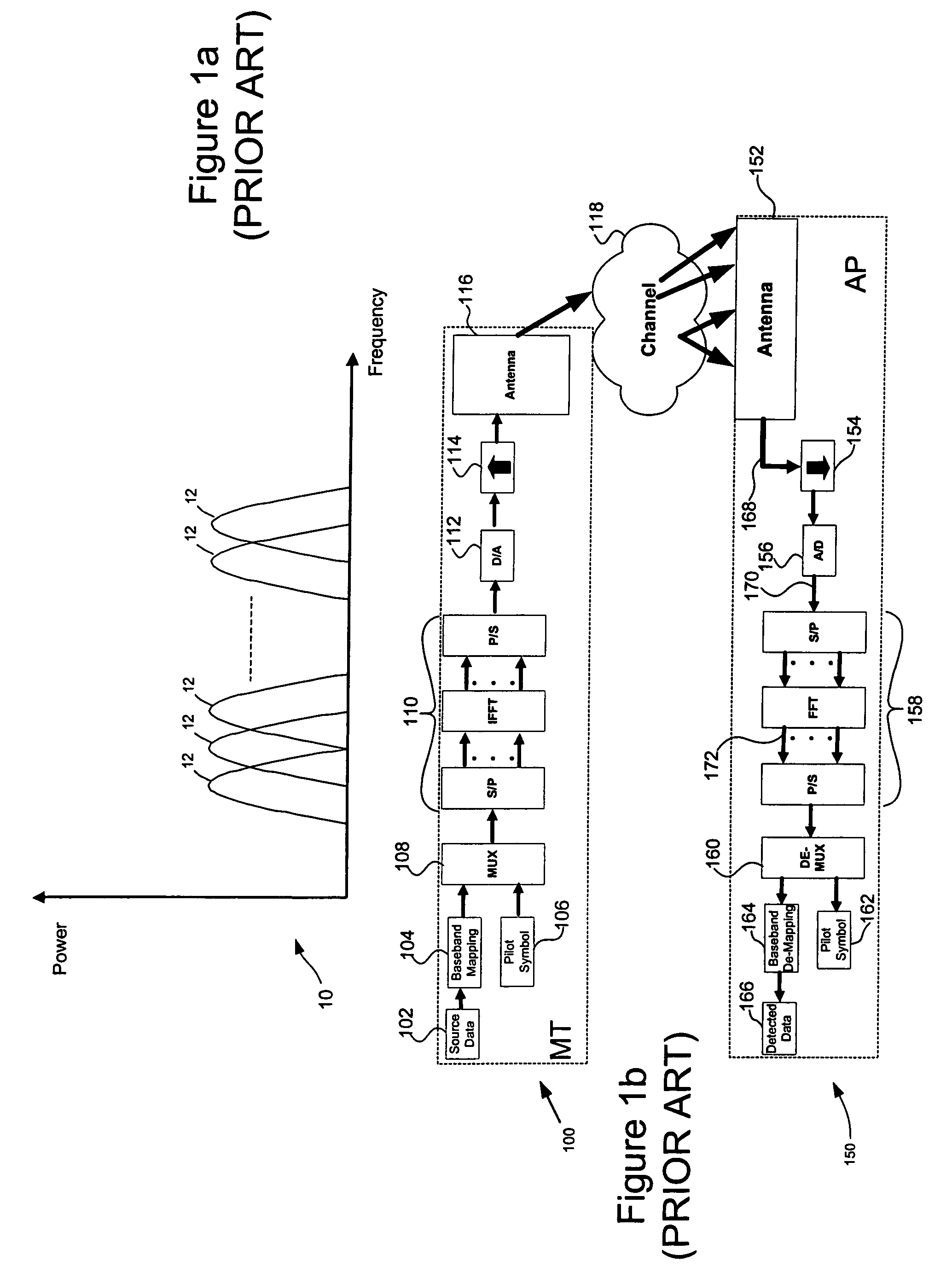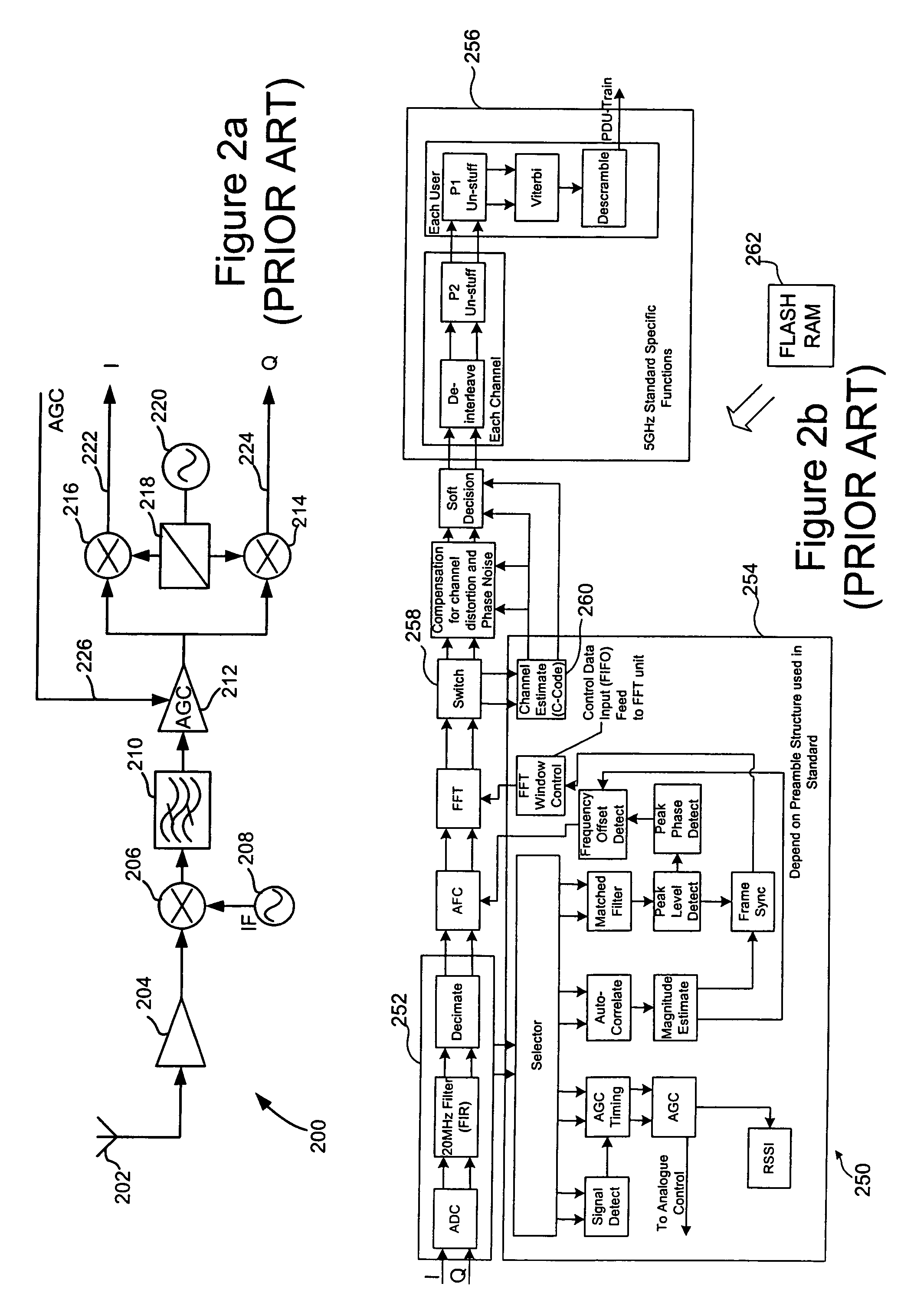Signal selection systems
a signal selection and signal technology, applied in the field of improved antenna techniques, can solve the problems of severe co-channel interference, co-channel interference, and communications systems can still suffer from the effects of multipath fading, and achieve the effects of reducing complexity, facilitating high data throughput, and alleviating the influence of severe multipath and/or co-channel interferen
- Summary
- Abstract
- Description
- Claims
- Application Information
AI Technical Summary
Benefits of technology
Problems solved by technology
Method used
Image
Examples
Embodiment Construction
[0052]Referring to FIG. 8, this shows a schematic diagram of a received signal selector 800 according to an embodiment of the present invention. A sectorised or array antenna 802 comprises a plurality of antenna elements 802a, b, c each coupled to a respective input 803a, b, c of a signal and interference strength detector 804a, b, c. Other conventional components such as downconverters and filters may be present between the antenna elements and the signal and interference strength detectors but, for simplicity, these arc not shown. Each signal and interference strength detector has a first output 806a, b, c comprising a straight through version of the input signal, optionally buffered or amplified. These first output signals are provided to a switch or selector 808 which selectively provides one (or in other embodiments, more than one) of these signals to an output 810 (or to a set of outputs 810) in response to a control signal 812.
[0053]Each signal and interference strength detec...
PUM
 Login to View More
Login to View More Abstract
Description
Claims
Application Information
 Login to View More
Login to View More - R&D
- Intellectual Property
- Life Sciences
- Materials
- Tech Scout
- Unparalleled Data Quality
- Higher Quality Content
- 60% Fewer Hallucinations
Browse by: Latest US Patents, China's latest patents, Technical Efficacy Thesaurus, Application Domain, Technology Topic, Popular Technical Reports.
© 2025 PatSnap. All rights reserved.Legal|Privacy policy|Modern Slavery Act Transparency Statement|Sitemap|About US| Contact US: help@patsnap.com



